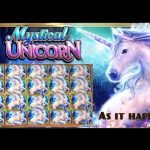Your doctor may also conduct a medical exam to rule out the possibility of other underlying conditions. In people with bipolar disorder or AUD, it’s believed that Can I drink alcohol if I’m taking painkillers the chemicals that regulate moods don’t work properly. Your environment as a young person can also influence whether you’re likely to develop AUD. All that’s needed for a diagnosis of bipolar I disorder is the development of a manic episode. These episodes may be so severe that they require hospitalization in order to stabilize.
Neurocognitive dysfunction is a core feature of bipolar disorder
If you or a loved one are struggling with both bipolar disorder and alcohol use, it’s crucial to seek professional help. A mental health professional with experience in dual diagnosis can provide a comprehensive evaluation and develop a tailored treatment plan that addresses both conditions. Every day, we find ourselves facing choices that, on the surface, seem inconsequential.
Order of Onset
Substance-induced depression is different from major depressive disorder and, by definition, should improve once a person stops consuming substances (such as alcohol). Over time, your brain’s reward pathway builds tolerance and requires more and more dopamine (via alcohol) to feel pleasure. This can lead to addiction and feelings of depression in the absence of the rewarding substance. There is also growing evidence that neurocognitive impairments are major predictors of BD patients’ long-term functional outcomes (Tabarés-Seisdedos et al., 2008; Wingo et al., 2009).
Do People Drink to Cope With Bipolar Symptoms?
- Also, having both conditions makes mood swings, depression, violence and suicide more likely.
- Many medications used to treat bipolar disorder, including mood stabilizers and antidepressants, can interact dangerously with alcohol.
- Alcohol can trigger manic episodes in individuals with bipolar disorder, leading to increased risk-taking behavior, impulsivity, and poor decision-making.
- Sperry notes that previous studies have shown that more than half of people who have a bipolar disorder diagnosis also experience alcohol use disorders sometime in their lives, and that many report using alcohol to help them get to sleep.
- In a survey of 500 bipolar patients, 48 percent consulted 5 or more health care professionals before finally receiving a diagnosis of bipolar disorder, and 35 percent spent an average of 10 years between the onset of illness and diagnosis and treatment (Lish et al. 1994).
- Having either depression or alcohol use disorder increases your risk of developing the other condition.
Your doctor may recommend working with a therapist who specializes in one or both conditions. Or, if you’d like to dig a little deeper into how we’re different, you can learn more about Cerebral Way and how Cerebral compares to other online therapy and medication management options.Images by wirestock, Freepik, and master1305 on Freepik.
PsychiatryOnline subscription options offer access to the DSM-5-TR® library, books, journals, CME, and patient resources. This all-in-one virtual library provides psychiatrists and mental health professionals with key resources for diagnosis, treatment, research, and professional development. According to the Diagnostic and Statistical Manual of Mental Disorders, Fifth Edition (DSM-5), if depression symptoms persist after one month without consuming alcohol, then a different depressive disorder diagnosis would apply. One study of people with both AUD and depression undergoing treatment for both conditions found that the majority of symptom improvement for both conditions happened during the first three weeks of treatment.
Bipolar disorder and substance abuse can create a feedback loop, each condition exacerbating the other and making treatment more challenging. The potential relevance of systems medicine for AUD (Spanagel et al., 2013; Gorini et al., 2014) and BD (Frangou, 2014; McIntyre et al., 2014) has been recently proposed. We agree with McIntyre et al. (2014) that this approach may be particularly relevant for BD with comorbid conditions. Specifically, systems biology provides an exciting opportunity to better understand the BD-AUD comorbidity at different levels.
This mixed mania, as it is called, appears to be accompanied by a greater risk of suicide and is more difficult to treat. Patients with 4 or more mood episodes within the same 12 months are considered to have rapid cycling bipolar disorder, which is a predictor of poor response to some medications. Bipolar II disorder is characterized by episodes of hypomania, a less severe form of mania, which lasts for at least 4 days in a row and is not severe enough to require hospitalization. People with bipolar II disorder often enjoy being hypomanic (due to elevated mood and inflated self-esteem) and are more likely to seek treatment during a depressive episode than a manic episode.
Cyclothymia is a disorder in the bipolar spectrum that is characterized by frequent low-level mood fluctuations that range from hypomania to low-level depression, with symptoms existing for at least 2 years (American Psychiatric Association APA 1994). Cyclothymic Disorder involves milder, yet chronic, fluctuations between hypomanic and depressive symptoms. Even though mood swings aren’t as extreme as the other bipolar disorders, they’re still impactful and drinking alcohol can complicate things. If you have cyclothymic disorder, alcohol can worsen depression and make hypomanic episodes riskier by increasing impulsive behaviors. It can also interfere with treatment by obscuring symptoms and reducing the effectiveness of medications. Therefore, individuals with cyclothymic disorder or any bipolar disorder are advised to use alcohol with caution or not at all.

 НОВОСТИ
НОВОСТИ Half-Life
Half-Life Half-Life 2
Half-Life 2




